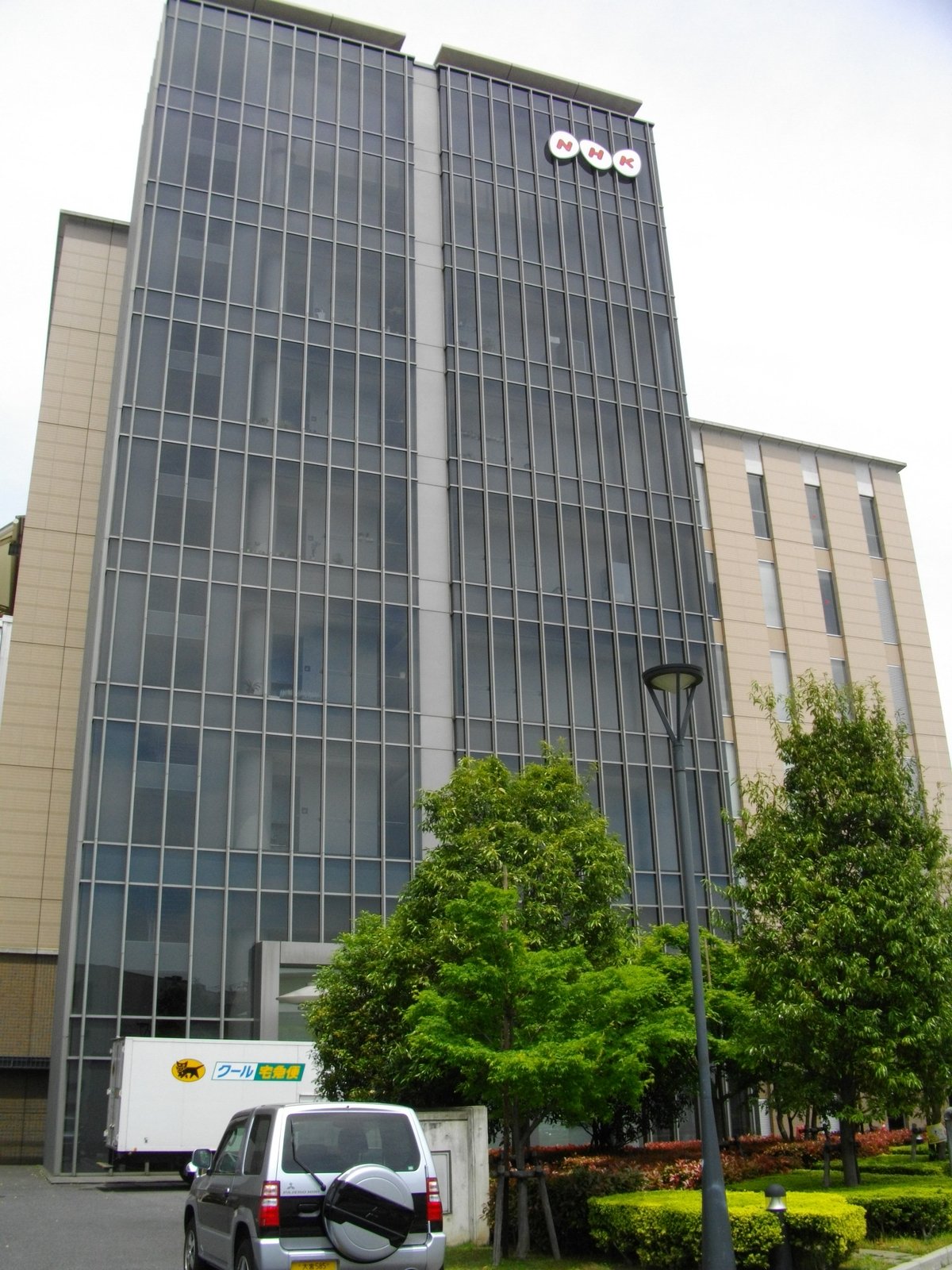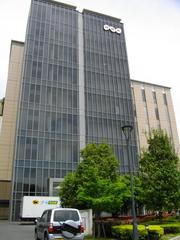
NHK Archives Kawaguchi Visiting Hours, Tickets, and Historical Sites Guide
Date: 14/06/2025
Introduction
Located in Kawaguchi City, Saitama Prefecture, just north of Tokyo, the NHK Archives is a premier institution dedicated to preserving, showcasing, and making accessible the rich legacy of Japanese broadcasting. Managed by NHK (Nippon Hōsō Kyōkai), Japan’s national public broadcaster, the Archives chronicle nearly a century of the nation’s social, cultural, and technological evolution through an extensive collection of radio and television broadcasts, scripts, photographs, production notes, and other invaluable resources.
Visitors to the NHK Archives can expect an engaging and educational experience: interactive exhibits, viewing booths with thousands of historical programs, and special collections such as the War Testimony Archives and disaster documentation related to the Great East Japan Earthquake. With free admission, wheelchair accessibility, and on-site educational programs, the facility welcomes researchers, media enthusiasts, families, and curious travelers alike. Its convenient location within Skip City—a modern media complex—makes it easily accessible from Tokyo, ideal for a cultural excursion.
This comprehensive guide covers everything you need to know about visiting the NHK Archives in Kawaguchi, including opening hours, ticketing (free admission), directions, facilities, special exhibits, and travel tips. Whether you’re a student of media, a history aficionado, or simply looking for a family-friendly outing, the NHK Archives offer a unique window into Japan’s broadcast heritage and national memory. For current visitor information and event updates, consult the official NHK Archives website and consider pairing your visit with other local cultural sites (City-Cost).
Historical Background and Development of the NHK Archives
The NHK Archives was established to serve as the central repository for NHK’s vast broadcast heritage, with roots tracing back to Japan’s first radio transmission in 1925 (NHK Archives History). Over the decades, NHK has documented pivotal moments in Japanese history, from the turbulent years of militarism and World War II, through postwar reconstruction and economic growth, to the digital revolution of the 21st century.
The Kawaguchi facility houses this remarkable collection, systematically preserving and cataloging audio-visual materials, scripts, production notes, and photographs. Its mission is to safeguard these records and make them accessible to researchers, educators, and the general public, ensuring that Japan’s media legacy remains available for future generations.
The Role of NHK Archives in Japanese Media and Cultural Preservation
Safeguarding National Memory
By documenting landmark events—such as wartime broadcasts, postwar recovery, and natural disasters like the Great East Japan Earthquake—the NHK Archives serve as a vital repository for Japan’s collective memory. These records are primary sources for researchers and the public to understand how Japanese society responded to and reflected on major historical events (NHK Disaster Archives).
Educational and Research Resource
The Archives are a cornerstone for educational initiatives. Schools and universities across Japan incorporate archival footage into curricula covering history, media studies, and disaster preparedness. Researchers utilize the archives for studies in media history, sociology, and cultural analysis. For example, Tagajo High School’s engagement with NHK materials exemplifies the educational value of primary media sources (NHK Archives in Education).
Disaster Documentation and Public Safety
NHK maintains one of the world’s most comprehensive collections of disaster-related broadcasts, especially regarding the 2011 earthquake and tsunami. These resources are crucial for public safety education and policy development, and selected materials are made available to educators through the Teacher’s Library and other outreach initiatives (NHK Disaster Archive Access).
Digital Heritage and Accessibility
Since the 1980s, NHK has prioritized digitizing its archives, ensuring broad accessibility and long-term preservation (Digital Cultural Heritage in Japan). Visitors can access over 30,000 digitized programs onsite, including rare broadcasts and thematic collections (NHK Archives Video Access).
Visiting the NHK Archives: Practical Information
Location and Access
- Address: 3 Chome-12-63 Kamiaoki, Kawaguchi-shi, Saitama-ken 333-0844 (City-Cost)
- Access:
- By Train: Take the JR Keihin-Tohoku Line from Tokyo Station or Ueno Station to Kawaguchi Station. From there, a short bus or taxi ride (around 10 minutes) leads to Skip City.
- By Bus: Local buses from Kawaguchi Station’s East Exit serve the Kamiaoki area.
- By Car: On-site paid parking is available (200 yen per hour), but public transportation is recommended, especially during weekends and holidays.
Visiting Hours and Admission
- Hours: Open Tuesday through Sunday, 10:00 AM to 5:00 PM (last entry at 4:30 PM). Closed Mondays, national holidays, and during the New Year period (December 29–January 3).
- Admission: Free for all visitors. Some special exhibitions or events may require advance booking or a nominal fee.
- Guided Tours: Not regularly offered, but can be arranged for groups with advance appointment via the NHK Archives website.
Facilities and Services
- Viewing Booths: Access thousands of archived broadcasts on user-friendly digital terminals.
- Exhibitions: Rotating themes highlight milestones in Japanese broadcasting and media history.
- Educational Programs: Workshops and seminars for students, teachers, and researchers.
- Character Gallery: Features NHK children’s program characters, puppets, and memorabilia with a family-friendly play area.
- Amenities: Clean restrooms, vending machines, coin-operated lockers, and rest areas.
Accessibility
- Wheelchair Access: The facility is fully accessible, with ramps, elevators, and barrier-free restrooms.
- Assistance: Staff can help visitors with mobility challenges; guide dogs are permitted.
- Signage: Most is in Japanese, but essential information is available in English. Translation apps are helpful for non-Japanese speakers.
Experience and Engagement
The Open Program Library
A highlight of the Archives is the Open Program Library, where visitors can view over 10,000 past NHK programs at 70 viewing terminals. Content spans dramas, documentaries, news specials, variety shows, and year-end Kōhaku Uta Gassen festivals. The interface is in Japanese but easy to navigate by genre, year, or title, offering a living time capsule of Japanese television.
Special Collections
- War Testimony Archives: Interviews with over 500 World War II survivors and original newsreels provide deeply moving historical insights.
- Disaster Archives: Recordings and testimonies from the Great East Japan Earthquake and other major disasters document recent history.
- NHK Creative Library: Visitors and users can access high-definition video and audio clips for creative use, with editing tools and on-site staff support.
- Michishiru (Regional Video Library): An interactive map allows exploration of short documentaries on Japan’s diverse regions, nature, and industries.
Restoration and Preservation Insights
Exhibits detail the painstaking process of restoring aging tapes and films, sometimes taking 60 hours to preserve just 30 minutes of footage. Displays explain NHK’s move to digital archiving to ensure future accessibility.
Family-Friendly Features
The character gallery is designed for families, especially those with young children. Photography is permitted here, and a padded play area features NHK kids’ shows.
Visitor Flow, Atmosphere, and Etiquette
- The Archives are usually quiet and less crowded than Tokyo’s major museums, creating a studious atmosphere ideal for families, researchers, and media professionals.
- Photography: Allowed in the character gallery and designated lobby spots, but prohibited in most exhibit and viewing areas to protect copyright.
- Etiquette: Visitors are asked to maintain a quiet environment and follow posted guidelines.
Tips for a Memorable Visit
- Combine your trip with visits to other Skip City attractions, such as the Visual Museum and Science Museum.
- Check the weather—June in Kawaguchi is mild but prone to rain (Weather25).
- Bring a translation app or a Japanese-speaking companion for a richer experience.
- Plan weekday or early afternoon visits for fewer crowds.
- Food options are limited onsite; consider dining in the Kawaguchi Station area.
Nearby Attractions and Kawaguchi Historical Sites
Enrich your visit by exploring nearby sites such as:
- Local parks and museums in Kawaguchi City
- Other Skip City facilities
- For more local suggestions, see our Kawaguchi Travel Guide and Saitama Cultural Attractions
Frequently Asked Questions (FAQ)
Q: What are the NHK Archives visiting hours?
A: Tuesday–Sunday, 10:00 AM–5:00 PM (last entry 4:30 PM). Closed Mondays and national holidays.
Q: Is there an admission fee?
A: No, entry is free for all visitors.
Q: Are guided tours available?
A: Group tours can be arranged in advance; individual guided tours are not standard.
Q: Is the facility wheelchair accessible?
A: Yes, with full barrier-free amenities.
Q: Can I take photographs inside?
A: Only in designated areas and the character gallery.
Q: Is English support available?
A: Limited; translation apps or a Japanese-speaking companion are recommended.
Visual and Media Suggestions
Enhance your visit or research by exploring:
- Photos of the NHK Archives building and viewing booths (alt: “NHK Archives Kawaguchi viewing booths”)
- Images of key exhibits and archival footage displays
- Interactive maps showing access from Kawaguchi Station
- Virtual tours or online previews via the NHK Archives website
Contact Information
- Address: 3-12-63 Kamiaoki, Kawaguchi-shi, Saitama 333-0844, Japan
- Phone: +81-48-268-8000
- Website: NHK Archives Official Website
- Email: Contact form on the NHK Archives website
Call to Action and Updates
Plan your visit by checking the official NHK Archives website for up-to-date hours, events, and visitor information. Download the Audiala app for mobile guides and curated itineraries. For ongoing updates on exhibitions and local cultural content, follow NHK Archives and Audiala on social media.
Summary and Further Engagement
The NHK Archives in Kawaguchi offer an unparalleled opportunity to explore Japan’s broadcast history, from historic radio and television programs to specialized collections on wartime testimonies and natural disasters. With free entry, accessibility, and a range of interactive and educational features, the Archives are a rewarding destination for all ages and interests. To maximize your visit, plan ahead, explore related Kawaguchi cultural sites, and utilize the resources provided by NHK and Audiala.
For the latest details and official updates, always refer to the NHK Archives website.
Sources
- Visiting the NHK Archives: Hours, Tickets, and Exploring Japan’s Broadcast History, 2024, NHK Archives (NHK Archives History)
- Visiting the NHK Archives in Kawaguchi: Hours, Tickets, and What to Expect, 2024, City-Cost (City-Cost)
- NHK Archives Visiting Hours, Tickets, and Visitor Guide in Kawaguchi, 2024, NHK Archives Official Website (NHK Archives Official Website)
- NHK Disaster Archives Report, 2016, NHK (NHK Disaster Archives)
- Digital Cultural Heritage in Japan, 1980–2012, Cambridge University Press (Digital Cultural Heritage in Japan)
